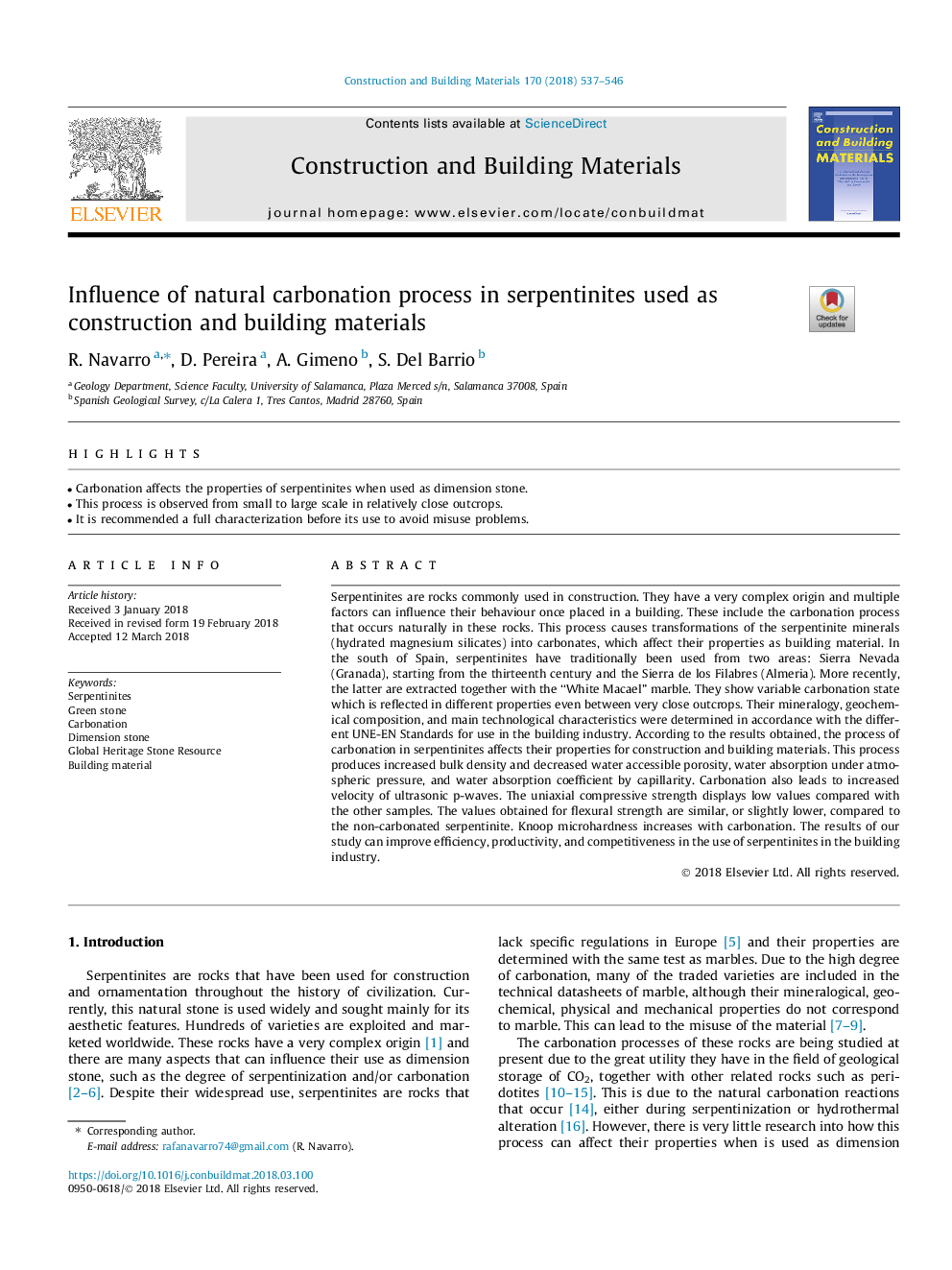| Article ID | Journal | Published Year | Pages | File Type |
|---|---|---|---|---|
| 6714231 | Construction and Building Materials | 2018 | 10 Pages |
Abstract
Serpentinites are rocks commonly used in construction. They have a very complex origin and multiple factors can influence their behaviour once placed in a building. These include the carbonation process that occurs naturally in these rocks. This process causes transformations of the serpentinite minerals (hydrated magnesium silicates) into carbonates, which affect their properties as building material. In the south of Spain, serpentinites have traditionally been used from two areas: Sierra Nevada (Granada), starting from the thirteenth century and the Sierra de los Filabres (Almeria). More recently, the latter are extracted together with the “White Macael” marble. They show variable carbonation state which is reflected in different properties even between very close outcrops. Their mineralogy, geochemical composition, and main technological characteristics were determined in accordance with the different UNE-EN Standards for use in the building industry. According to the results obtained, the process of carbonation in serpentinites affects their properties for construction and building materials. This process produces increased bulk density and decreased water accessible porosity, water absorption under atmospheric pressure, and water absorption coefficient by capillarity. Carbonation also leads to increased velocity of ultrasonic p-waves. The uniaxial compressive strength displays low values compared with the other samples. The values obtained for flexural strength are similar, or slightly lower, compared to the non-carbonated serpentinite. Knoop microhardness increases with carbonation. The results of our study can improve efficiency, productivity, and competitiveness in the use of serpentinites in the building industry.
Related Topics
Physical Sciences and Engineering
Engineering
Civil and Structural Engineering
Authors
R. Navarro, D. Pereira, A. Gimeno, S. Del Barrio,
